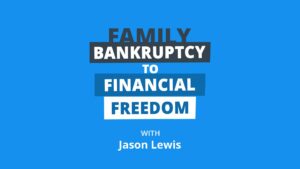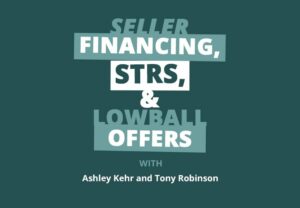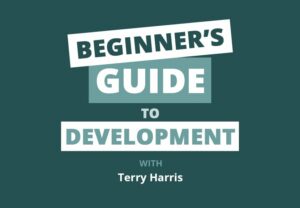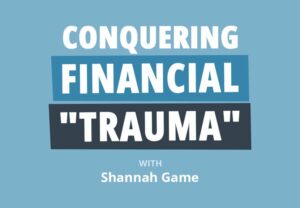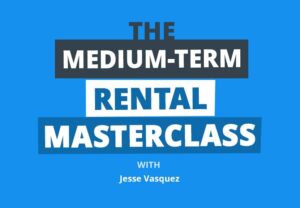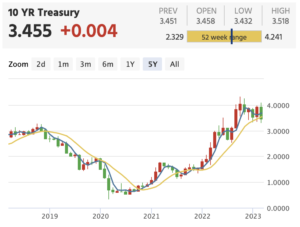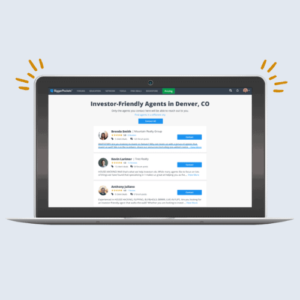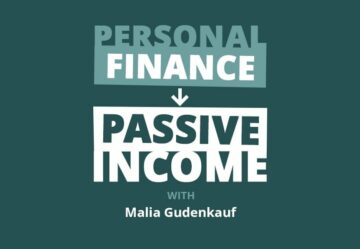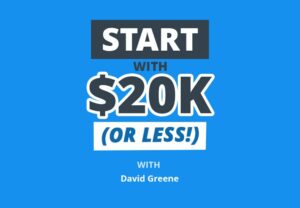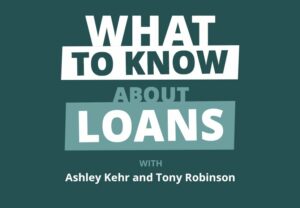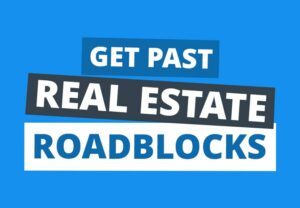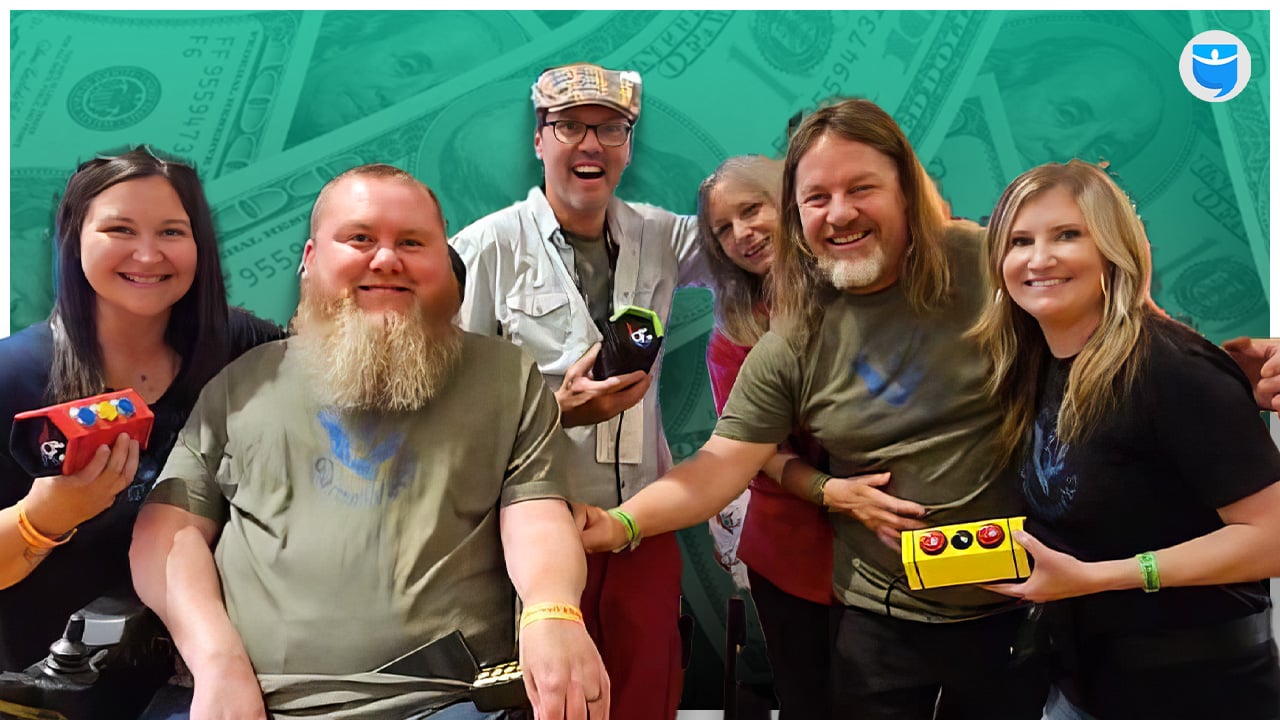
Are you sitting on an amazing business idea? Knowing how to get money to start a business is a critical first step to getting your concept off the ground. While there are all kinds of funding options, you may be able to get FREE money with a grant. That’s exactly what today’s guests did!
Welcome back to the BiggerPockets Money podcast! Today, we’re chatting with Cheryl Edmundson and Erin Jacobsen from Inclusive GameWerks—a fledgling business that has developed an inclusive pinball controller for people with disabilities. After building the first prototype for a close friend, they realized the device’s incredible potential. So, they went right to work—fine-tuning the design, structuring their business, and, of course, looking for ways to fund their new venture. Before long, they had landed a ten-thousand-dollar grant to get their operation up and running!
If you’ve got an entrepreneurial spirit and a great business idea, this is an episode you won’t want to miss! Tune in as Cheryl and Erin show you how to launch a business alongside your nine-to-five job, find your lane in an established market, and get FREE money for your business!
Click here to listen on Apple Podcasts.
Listen to the Podcast Here
Read the Transcript Here
Scott:
Welcome to the BiggerPockets Money podcast, where we interview Erin and Cheryl from Inclusive Gamewerks and talk about starting a wholehearted business using grant money.
Hello, my name is Scott Trench and with me as always, but for the first time, is our senior producer of the BiggerPockets Money podcast, Kailyn Bennett.
Kailyn:
Hi, everyone.
Scott:
Mindy was not feeling well today, and Kailyn is an expert on this particular business and always brings expertise, and we’re so excited. Kailyn and I are here to make financial independence less scary, less just for somebody else, to introduce you to every money story because we truly believe financial freedom is attainable for everyone, no matter when or where you’re starting.
Kailyn:
That’s right, Scott. Whether you want to retire early and travel the world, go on to make big-time investments in assets like real estate, start your own business, get a grant, we’ll help you reach your financial goals and get money out of the way so you can launch yourself towards your dreams.
Scott:
Kailyn, welcome to the BiggerPockets Money podcast as a host today.
Kailyn:
Oh my gosh, it’s crazy, Scott. I’m so excited to be here with you. It’s definitely different coming on to host a show versus being the man behind the curtain. I feel like we’re pulling it off today. We have such a good story. This is a story I’ve personally been following as a producer for a number of months where a group of our local Colorado business owners came together and they created an inclusive pinball controller so anyone can play pinball, which is just amazing. During the show, we’re going to go through all the business aspects of it and how you can start your own business using grant money. I think it’s good for any entrepreneur, any small business owner to listen to.
Scott:
Awesome. Remind us again how you know Erin and Cheryl?
Kailyn:
Yeah, I met them just out and about in Colorado. I met them through the brewery community. A member of the group, Zack, owns a brewery called Chain Reaction, which I’ve gone to many times, I met him through there. Cheryl and her husband Dean used to own an amazing brewery called Dead Hippie, and so I just met them out and about. They started telling me about their truly game-changing business and eventually I just had to be like, “You guys, this is too cool not to talk about. We got to have you on the show.”
Scott:
Awesome. It sounds like you’ve spent many happy hours with them.
Should we bring in Cheryl and Erin?
Kailyn:
Yeah, let’s do it.
Today we’re talking to Cheryl and Erin about their business Inclusive Gamewerks, which produces and designs inclusive pinball controllers. Cheryl and Erin, welcome to the BiggerPockets Money podcast. I am so excited to talk to you today.
Cheryl:
Excited to be here.
Erin:
Hi, Kailyn. Thanks so much for having us. We’re excited to be here.
Scott:
To start the show, Erin, could you tell us a little bit about what Inclusive Gamewerks is and what the business mission is?
Erin:
Absolutely. It’s a group of six of us, a group of friends who came together with a very broad mission of just increasing inclusion for people with disabilities. Our specific start point was the controller that Kailyn mentioned, that is an inclusive connection for people with disabilities to play pinball, but our goal is to go much further.
Kailyn:
Erin, I think I would love to start to dig in and I’d love to hear about how did the story unfold? How did you decide to make Inclusive Gamewerks and what was the impetus to go ahead and design this controller?
Erin:
A bunch of us in this six-person group, we’re pretty into pinball. Sounds nerdy, but it’s really fun. We have pinball games in our basements. We all get together, we play pinball. One of our co-founders has muscular dystrophy and he’s in a motorized chair and can’t play pinball in the traditional standup method. He was always giving us a hard time about pinball, “Oh, what’s so great about pinball?”, and we’re like, “Oh, come on, it’s really fun.”
We got to the bottom of it. It’s not fun, it wasn’t fun for him. He wasn’t included. We’d play pinball and it would take the group away and he was on the sidelines, so we decided to do something about it. Specifically, my husband woke up with an idea and said, “I think we’re going to figure this out.” With the brainchild of all six of us, and it took all six of us, we got to where the controller is now.
Kailyn:
That’s amazing. I’ve seen the controller and it’s a truly revolutionary product. Cheryl, to start the show, can you kind of give us an idea, paint a picture for us, what does this controller look like and how does it make pinball more inclusive?
Cheryl:
It started off as a Frankenstein-looking project. It was basically Erin’s husband Joe bending plexiglass by hand and installing these huge buttons on it and setting it on our buddy Zack’s lap and deciding the width and depth and height and circumference of the buttons. Everything was taken into consideration.
Ultimately it became much more of a sort of portable, handheld, kind of a hexagon-shaped console controller. Much more sexy, much more edgy because we knew our buddy Zack was not going to be okay unless it was sexy and edgy and fit into the pinball community.
Kailyn:
Just so our audience knows, it 100% is. It comes in multiple colors. It is a really big hexagon shape, but there’s neon, there’s sparkles. I even think I saw a rainbow one at one point.They have custom end caps where if you have a Jurassic Park pinball, you can have an end cap with Jurassic Park T-Rex on it. It’s a really cool product.
How it looks is the controller is handheld by someone and there’s a cable that goes straight into the machine. You can be sitting, you can be standing. If someone has limited mobility, they can use one hand. Just to give our audience sort of the picture of what this looks like, it is a really slick design.
Scott:
How much time and money and how did you go about creatively building this controller to get the first prototype or working version out?
Erin:
The very first one, almost no money at all. Time, for sure. It was a labor of love, it was an investment of a lot of time with our group. There were multiple nights in the basement trying different renditions, phoning friends, asking for advice, really just using our network to create the first one. I think it cost us less than I’d say $10 to make our first prototype. The first prototype had exposed electrical wire. It wasn’t great.
Scott:
You got it working, I assume, and what was Zack’s reaction to this first prototype or the first working version?
Erin:
Hopefully, I can get through this without tears. It was a beautiful moment. He came over when the electrician was here. We didn’t want to hook it up until we were pretty confident it would work. The electrician said, “No, we’re ready. Go for it.”, and Zack played his first game of pinball with us and it was pretty emotional for all of us in the group. Zack shared this with us that it’s not often that things come back to him in terms of abilities or new things that he can do, there’s not a lot of new that happens in his world. His wife and kids came back. We played pinball most of the night. It was really special.
Scott:
When did you decide, “Hey, we’ve got this invention that is doing a wonderful thing for your community and Zack as an individual.” When did you decide to make it into a business opportunity?
Erin:
It was actually Zack’s idea. All of us got together to do this and we said, “Hey man, we made it for you just so that we could all play together and have fun.” He said, “I think it can be more”, and his wife Alicia pulled me aside and said, “I think this can really help people. This could be a really big deal, so we’ve got to do something with it.” Everybody looked at my husband and myself and said, “You guys are going to run with this, right?”, and I was like, “Oh no, we’re all going. Let’s go.”
Kailyn:
Erin and Cheryl, I think what’ll help our audience a little bit is can you tell us about the key players who the six of you are? I kind of put it this way, how these six superpowers of pinball, business acumen, genius came together to make this machine. Let’s start Erin, you and your husband, Joe. Can you explain a little bit about what you did for the business? I know that you guys are kind of like the sales front of it, and then go through the other four players that came together.
Erin:
Joe and myself both have backgrounds in sales, corporate, executive level sales, but we’re also entrepreneurs at heart. We see a problem and we want to fix it. I think our minds are always open. Joe and I have started small businesses before, so we knew kind of the foundation of it starting the business. Joe and I really just started the networking, started the sales process. What does the product need to look like? How do we get it to market? Some social media stuff. It’s tough when we talk about each individual player because our roles overlap. I think in any small business, the roles are hard to define in small business because you all have to be involved.
It’s myself and Joe, Dean and Cheryl. Dean is our technical guru for sure, he is the one who helps us with most of the electrical components. Cheryl keeps us functioning or keeps us organized, making sure that we are keeping everything documented and following the processes and procedures we need to, which is helpful in a group like ours. Then you have Zack and Alicia. Alicia is the heart. It’s so easy to listen to her and to understand where she’s coming from and what we can do to be more inclusive. I would say she’s really our heart. Then of course Zack, he always laughs because kind of our poster boy if you will, but he does so much. He does a lot of our social media, he is constantly helping us collaborate on the design work, he is very heavily involved in the customization pieces that we work on. Hopefully that gives enough about each of us.
Kailyn:
I think that that is a really special combination. You have sales, you have design, you have a true product tester, and you have people that truly care about it. Your business has only been going for less than a year, is that correct?
Erin:
The prototype was last summer, but our business really started at the beginning of this year.
Kailyn:
That’s incredible acceleration. I want to really take a moment and let our audience kind of take that in for a minute. If you bring the right people together, you can really do anything if you have the right pieces together. I’d like to shift a little bit. How did you go from just this group of friends, maybe going to a brewery, talking about this prototype to shifting it into a true business? Did you decide to have an LLC? Is this a nonprofit? When did this sort of come together?
Cheryl:
Erin was the instrumental one in researching options for the grant funding, and at the same time, we knew that it was going to be a business idea. Now it’s about the choreography of keeping the grant funding and all of the design and research and documentation separate from the business side of it. Two separate things working at the same time. What the grant funding allowed us to do was really build controllers, get them in people’s hands because, like Erin mentioned, we’re carving out new territory. This is uncharted territory and we really need the data from the people that we’re impacting. We need the feedback from them to determine, “Okay, where do we go as the business?” For right now, we’re really focused on the grant and the goals of the grant, which is including as many people as possible within Colorado to enjoy the game of pinball.
Kailyn:
I love that.
Scott:
I would just love to learn more about this grant. A grant is essentially a gift, there’s no loan, you don’t have to pay it back. How did you get it? How much is this grant? Are there stipulations or things you have to do in order to continue receiving it or?
Erin:
I did a Google search on grants available in Colorado for advancing efforts for people with disabilities. There are federal grants, there are state grants. This one in particular, it fit our bucket. You really do need to read the requirements for grants because this grant in particular had two components. One was really designed for making buildings more accessible or businesses who wanted to improve the ramps going into their business, physical accessibility improvements. The other one, which is the one we applied for, was really to improve the lives of people living with disabilities in Colorado. That one fit our bill. Obviously you wouldn’t think that a grant would necessarily fund playing pinball, but the goal of that grant really is to improve the lives of Coloradans.
We read the requirements, which were pretty minimal. We did have to have a board, you needed to have a formal infrastructure to apply, which we did. We created that very quickly. Then it was just really answering their questions, being mindful of why they’re asking what they’re asking, and then really being clear with your intent. I think we as a group did a nice job of being very clear with exactly what our goal was and we were told we made it to the finals. There was a final review committee, we had to provide some additional information, and then within a few weeks we had a check from the state, literally in the mail for $10,000. It was pretty exciting.
This is where things get a little interesting. Anybody considering a grant, you’ve got to be careful with how you spend your money. The way that we look at it is really we have two buckets of our business. We have the grant bucket and then we have general business. The grant money specifically needs to be used to help people’s lives, to get Coloradans out using our product playing pinball. We’ve tried to be very mindful to of that spend. That has gone to research and development, our prototypes, getting feedback from the community, putting our controllers into different breweries, different places where people can come and play. We’ve used our money primarily for that initially, and then now we are coming to the end of the year and also the end of our grant money spend, and it’s really about inventory. We want to have enough inventory to get these controllers into as many hands as we can.
Kailyn:
That’s really wonderful Erin, I think that that’s an excellent strategy. I think a lot of our listeners who maybe want to start a small business are really wondering if you get a grant, can you be a for-profit business long-term?
Erin:
You certainly can. We get that question a lot if we’re a nonprofit, and I would always recommend with any business, always talk to your accountant, whoever your business advisor is, get some advice before you make those decisions. It’s fairly easy to transition from a corporation or an LLC to a nonprofit in the future. It is much more difficult to go the other way around. We started off as a corporation. And we are absolutely eligible for these grants. We look at the profitability side, that’s more of our retail side, that’s more of that general business bucket I mentioned. The grant money we’re really focused on just getting out into the community. All of the money that we’ve spent from the grant is really for that purpose. The retail side is where we absolutely have the opportunity to be profitable.
Those are our retail sales, being involved in expos, things like that. Also, our national, the grant was specific to Colorado. Obviously the scope is global, which we didn’t see that coming, but we are international now. The general business side is really where we’re advancing that. It really depends on what your organization is trying to accomplish. We were people first and profits is secondary, but our focus might be a little bit different so I think it’s important to define where those priorities are when you enter into grant applications and things.
Kailyn:
That makes so much sense. Before we jump into how you spent a little bit more of the grant money – and that’s in events and networking, we know that you went to several pinball expos – I’d like to take a step back and really talk about the design phase because you went from this plexiglass, wires everywhere sort of prototype to this really what we talked about earlier, sleek controller. Cheryl, I’d like to direct this next question to you. At what point did you find it necessary to bring on a designer or extra vendors to actually create this product?
Cheryl:
We knew pretty quickly. We knew that the big plexiglass laptop tray was not going to be a good solution long-term, so that’s when we leveraged our friend Tom, who is with 5280 makers, and he 3D printed the initial design for us. Honestly, he nailed it pretty quickly right off the bat. He listened to what our concept was. We were literally showing him hand motions like “it should do this” and “it should be able to be placed on a lap” or “it should be able to be positioned in such a way that depending on someone’s hand mobility limitations, that they could use it in multi different positions.” He listened to all that and the first design came out and I think we all screamed with delight. It was amazing.
Kailyn:
Erin, did you have some tears?
Erin:
There have been tears on every level during this whole process. Lots of tears.
Scott:
Can you tell us a little bit about how much a controller costs and what you plan to sell it for? The unit economics, if you will?
Erin:
I’m going to have to give you an average, there’s a lot that goes into it. It’s on average around $375, less if it’s within the grant scope, then we’re really just trying to cover costs. It can go a little bit more if there’s customization, but on average $375, and that is both the external component and the internal harness that connects the electrical components inside the machine.
Scott:
How much does it cost you to make one of these?
Erin:
Right now, it’s probably a third of that.
Kailyn:
I’m sure you had to pay for design work, you had to pay for multiple additions, and test prototypes of your controller. I’m sure a fair portion of the grant money went to all those different types of tests. Is that correct?
Erin:
Correct.
Scott:
Yeah, those are very reasonable. That’s a very normal spread between a retail price and cost to produce for a product in that price range, I believe.
Erin:
That was our goal
Scott:
How do you market the product and plan to sell it? How many do you think you can sell long-term?
Erin:
That changes almost weekly for us, which is really great. Very cool. Initially we thought we’d be successful if we sold 50 controllers over time. We’ve currently sold 22 in a matter of weeks, so our projections are having to shift. It’s hard to explain our niche inside of this industry. The pinball industry is well established, here’s a lot of people that play pinball. You wouldn’t necessarily think it, but it is a very popular industry and this is a completely new concept to anyone who’s familiar with pinball. You’re asking to change gameplay, you’re asking to consider a different way of playing, and we’re carving a new path. It’s really about the adoption of people in the pinball community as well as encouraging people with disabilities to come and try it. It’s a totally new concept.
There’s a lot of education. The sky is the limit, so cheesy, but we don’t know that we have a real scope of it yet, Scott. 15% of Americans are registered as having some kind of a disability, so I think the market is big and you go internationally in similar statistics, not quite as high as the U.S. but similar statistics. If we can reach people, I think this will continue to grow and I think we’ll have different developments in different products. We’re learning a lot as we go through this.
Scott:
There’s lots of ways to think about a market and one way is, “Oh, there’s x% of people play pinball and x% of people with disabilities will therefore play a pinball if we get access to this.” I think in your case, you kind of are making this accessible and this really exciting thing there, and so you could argue that there’s a chance to make a really big market here by making this a pastime that a much higher percentage of people with disabilities, for example, want to play or want to pursue than maybe even the general public in there. There’s kind of this concept of “how do I think about the market one way” and then “how do I think about making a market”, which is potentially what you could do.
Erin:
That continues to evolve our conversations as a business and as a group, because we really are paving the way and it’s exciting and it’s fun. It’s interesting to be the first.
Kailyn:
I think so too. I’ve actually played with the controller, and I think the thing that’s really special about it is it is truly accessible to anyone. If I’m tired and I’ve had a long day and I don’t want to stand at a pinball machine, me as an able-bodied person can play this controller and can do really well and get a high score. I think that that’s the really special thing about it is yes, it’s inclusive, but anyone can use it. Kids can use it that are maybe having a hard time learning how to play a pinball. I think that that’s really special. I want to shift a little bit, and I’d love to talk about some marketing you guys have done. I think a lot of other people start to experience how accessible this pinball controller was through many events you’ve done. Can you tell us a little bit about the expos you’ve gone to and how that has become a big tenet of your marketing process?
Cheryl:
It’s a lot about getting out there, exposing different populations to the product, shaking hands, letting them see it in action. I think we’ve done three expos so far, Erin. There’s been Atlanta, Chicago, and then here locally. We’ve had so many industry partners that have been kind to us and allowed us to share booth space, no charge, things like that. You start to develop those relationships in the industry too that previously would not have been there. It’s been an amazing journey.
Kailyn:
I hear that someone really interesting and exciting in the industry played the controller. Can you tell us a little bit about that development?
Erin:
Stern Pinball is one of the largest manufacturers of pinball machines worldwide. The majority of games that we play are made by Stern. We’re at the Pinball Expo in Chicago and start to hear everybody rustling around us like, “oh gosh, what’s happening? We don’t know.” The founder of Stern Pinball, Gary Stern, was wandering around and introducing himself and saying hi to friends in the industry and things, and he stopped by and checked out our controller and just had amazingly positive feedback for us. Of course, we should be doing this. What way to go? You guys are amazing. We’re all fangirling. Oh my gosh, it’s Gary Stern.
It was really cool to see someone who was such a pioneer in pinball, and continues to drive pinball, have an interest in our little controller as we were seeing it then just really good feedback. Again, like Cheryl said, from everyone in the community, we had designers, we had developers all coming and talking to us and checking out the product and congratulating our design work and the engineering behind it. It was a lot of validation, but also a lot of really good exposure to the folks that basically are validating our path forward, which is great.
Kailyn:
Yeah, I think that that’s truly incredible. The other big thing that came out of your Chicago Pinball Expo is Zack and Joe, who just to remind our audience is Erin’s husband, actually got to speak to a room full of people about the controller, which is pretty amazing. I’d like to tee up a clip here with Zack who as a reminder to our audience, is a gentleman with a disability who this controller was designed for, and this is him speaking at the Chicago Pinball Expo about his experience designing this controller, learning this controller and what it’s given back to him. We’re going to go ahead and play that for you.
Zack:
What this controller has kind of done is give something back to me. It’s given things back to people that have one hand, have back problems, or have a hard time seeing or standing. It’s giving back. I get to sit with my kids now. I can’t go throw the ball or maybe I can’t go for that long hike, but we’ve been able to bond and I’ve been able to have that caring moment doing things with my kids and date nights with my wife as well, just get in to play a couple of games. It might seem like a silly game, but that’s a part of my life that was given back. I think in many areas that could be a life-saving thing.
We touch on the social involvement of encouraging people with disabilities to get out into the community and [inaudible 00:27:12] and checking up. ADA is just the law, it gets me into the building. Inclusivity is the desire to have me there. What is more than just getting names to that table with the food to eat? What helps me and other people with disabilities or whatever they’re going through, what makes them feel like they sit. I think that that is the biggest key to what we’re doing is that everyone should have that choice to play.
Kailyn:
Hearing Zack speak, that was really passionate and powerful. What impact did it have at the conference? Was the room filled with tears? Were people in awe of the product? What happened?
Erin:
It was inspiring. What I’ve learned through this whole process is if we talk about it, the conversations that come up are amazing. Just asking the question, “Do you have someone in your lives who has a disability that might benefit from a controller and coming out into play pinball with us?” It’s amazing the mind-share, but also the conversations that come from it. A gentleman in the room was from a university in England and he was talking about, “well, how could we include additional robotics and things like that?” It’s very cool to see that everybody wants to come together to help boost this idea. It’s not maybe your traditional business model where you really want to keep things close because you don’t want someone to run with your idea. It really has just been a lot of camaraderie and a lot of collaboration. I feel like the room was that when we were at the expo as well.
Scott:
What’s next for you guys here? Also, I want to chime in with have you patented this technology? How are you thinking about the future? Are there are more inventions coming down the road? How are you going to solidify the business today, and what’s up on the docket for 2024?
Erin:
We are patent pending, that was one of our initiatives that we did early on this year. Also, one of the lessons learned from the grant. The grant money could not be spent on any legal fees, so make sure you do the research and find out what grant money can be spent on or what the restrictions are. That was on us as a group to pay for the patent pending. We reached out to a few different attorneys. We got some advice, called friends, used all our phone-a-friends that we have and just got some advice that we probably don’t need to hire an attorney for $25,000 to go full patent at this point. We registered on Legal Zoom. We really are grass rooting this and it’s going well. We went through the legal Zoom process, very easy, and they send you a packet, you do the research, fill out all your answers, send it back to them, and they have someone review it and see if there’s any other products that compete with yours. We received our patent pending within a few months of submitting our initial application for patent.
Kailyn:
That’s amazing. Congrats. I do have one more question for both of you. You have this amazing patent pending, you’ve done all these incredible events, you’ve gone from nothing to something in less than a year, which is pretty incredible for a small business. I really want to know what impact has this had on the community in Colorado, are folks with disabilities hitting high scores now? Are you seeing more community in bars? What does this look like for you now?
Cheryl:
It’s pretty amazing. Shortly after our prep call, Kailyn, I got a text from Zack that he had hit a personal best high score, grand champion score, on the game he was playing. That sounds nerdy and silly maybe to the average person, but this is an accomplishment that would’ve previously been impossible six months ago for him. Now he’s included in that community in this way. We’ve had countless stories from all around the world, people that are impacted by the controller who can now be included at the local brewery or in their own home and socialize with friends and family in a way they couldn’t previously do. A number of stories like that, but also the awareness, raising that awareness. The accessibility is one issue, but the inclusivity has been amazing too. Our industry partners from all over have been incredible. In fact, one of them actually changed their interface to align with the way that ours hooks up to the machine. It’s just unbelievable how open people’s hearts have been.
Erin:
You asked earlier about plans for 2024 and the future, what does it look like? I think our goals for the future are just to continue with what we’re doing. The growth that we’ve seen, the expansion of interest in our products just continues to grow. Where I really see us being strong is in customization. We’ve developed our initial controller with one design in mind, and we designed it to try to fit as many disabilities as we could, to make the controller something that rolls so people can hold it different ways, but there’s so much more. We are constantly getting requests. “This is my disability, this is how I would engage with the controller. Can we do that?” So far our answer has been, let’s find out. I know that a lot of times in business, customization can get a little scary. How many SKUs are we going to have?
How much production are we going to have? There’s also a lot of advancements that can come when you offer that customization. Our scope will be wider and we’ll charge accordingly. The design time that it takes, the additional manufacturing of components are more expensive. That same profitability model will scale on any type of project that we work on in the future. I think continuing down with the customization road will be really critical for us. Then I think as people keep talking about it. It just amazes me the emails that we keep getting of, “Hi, we saw you on this tournament”, or “We saw this at this expo”, or “We saw you on Facebook.” People were coming up to Zack and Joe, who are primarily the faces on Facebook, at the expo in Chicago saying, “I just really wanted to meet you. I’ve been watching you on Facebook.” We’re like, “Really? This is so cool.” I think we’ll continue with that scope as well as, again, keeping open to other ideas that come up. We’re a pretty entrepreneurial-spirited group, so I think we’ll keep coming up with stuff.
Scott:
This is going to be your first holiday season while the product’s live, right?
Erin:
Yes.
Scott:
I think that’ll be exciting. This is potentially a wonderful gift to get somebody for the holidays. I’d be interested to see if that is a tailwind that you’re already seeing, it might even accelerate in the next couple of months.
Erin:
We hope so. The holiday is all about family and coming together and what better way, if you’re into pinball and now the whole family can play with you. I think it aligns with the goals of the holidays, for sure.
Kailyn:
I love it. My heart is so full with this idea. Congratulations on this amazing business. I know Scott and I are anxious to see the future and how big it’s going to get. For our audience, where can people find you? Is there an Instagram? Is there a website? If they want to purchase a controller or just go and support you.
Cheryl:
It’s inclusive Gamewerks, and we are on Facebook, Instagram, we have a website.
Kailyn:
Everyone go check out Inclusive Gamewerks. Erin and Cheryl, thank you so much for coming on the show today. We’re thrilled to talk to you.
Cheryl:
Thank you for having us.
Erin:
Thanks so much.
Scott:
That was Cheryl and Erin with Inclusive Gamewerks. Kailyn, what do you think?
Kailyn:
Oh my gosh. I already kind of had the inside scoop on this story, so I knew it was going to be really great, but just re-hearing all of it again, learning about how six incredible business owners came together, designed something that’s going to change the industry in a matter of a year. It’s so inspiring. I think it really lights a fire under any person with an idea. There’s no excuse, anyone can do this.
Scott:
Hopefully your mind is turning over the things you like to do and thinking about ways to help make them more accessible or more popular or more enjoyable to other folks. That can come with a good cause. Crazy ideas are jumping into my head. Is there an invention that could make bowling more accessible to folks with disabilities? Whatever it is that you like. I’m not a big bowler, but I was thinking like, “Oh, there’s probably a way to do this in a lot of cases.” What that does is that allows you to enjoy your favorite pastime, make it accessible to more people, probably get grant money if you’re making it accessible to folks, and then have a crack at a potential business that could just be fun. I hope people’s wheels got turning because this is really inspiring.
Kailyn:
It is. I think sometimes young business owners maybe get into the mindset of like, “What’s going to make me the most money fast?”, but I think what is really powerful longevity wise in a business is moving in a business that you’re really passionate about. You can definitely hear that from Erin and Cheryl. They just care so much about that and so they built a world around it. I think that that’s a really inspiring, aspirational principle for anyone on BiggerPockets Money to really sit and think about.
Scott:
Absolutely.
Kailyn:
All right, Scott, before we get out of here, you’re really good at dad jokes so I brought you a dad joke because I couldn’t help myself today. What do pinball and seals have in common?
Scott:
They both bounce, double bounce.
Kailyn:
They both have flippers.
Scott:
That’s a double bonus joke-
Kailyn:
Double bonus, yeah.
Scott:
For our pinball episode here today.
Kailyn:
You always bring the best dad jokes, so I had to think about this one ahead of the show to compete on this outro.
Scott:
My pinball jokes today were terrible, so you get the high score. Really appreciate it. Thank you for joining us today.
Kailyn:
I am Kaylin Hope Bennett. He is Scott Trench saying, go play Pinball.
Speaker 6:
Bigger Pockets money was created by Mindy Jensen and Scott Trench, produced by Kaylin Bennett. Editing By Exodus Media. Copywriting by Nate Weintraub. Lastly, a big thank you to the BiggerPockets team for making this show possible.
Watch the Episode Here
[embedded content]
Help us reach new listeners on iTunes by leaving us a rating and review! It takes just 30 seconds. Thanks! We really appreciate it!
In This Episode We Cover
- How to get FREE money to start your new business
- How to find, apply, and get approved for a business grant
- Using grant money appropriately within a for-profit business
- The best ways to structure your new business
- Building a business without leaving your nine-to-five
- Driving your business forward through the power of networking
- And So Much More!
Links from the Show
Connect with Inclusive GameWerks:
Connect with 5280 Makers:
Interested in learning more about today’s sponsors or becoming a BiggerPockets partner yourself? Check out our sponsor page!
Note By BiggerPockets: These are opinions written by the author and do not necessarily represent the opinions of BiggerPockets.
- SEO Powered Content & PR Distribution. Get Amplified Today.
- PlatoData.Network Vertical Generative Ai. Empower Yourself. Access Here.
- PlatoAiStream. Web3 Intelligence. Knowledge Amplified. Access Here.
- PlatoESG. Carbon, CleanTech, Energy, Environment, Solar, Waste Management. Access Here.
- PlatoHealth. Biotech and Clinical Trials Intelligence. Access Here.
- Source: https://www.biggerpockets.com/blog/money-478
- :has
- :is
- :not
- :where
- $UP
- 000
- 12
- 15%
- 2024
- 22
- 24
- 27
- 30
- 3d
- 50
- a
- abilities
- Able
- About
- about IT
- absolutely
- accelerate
- acceleration
- access
- accessibility
- accessible
- accomplish
- accordingly
- accountant
- Action
- actually
- acumen
- ADA
- Additional
- Additional Information
- additions
- Adoption
- advancements
- advancing
- advice
- advisor
- After
- again
- ago
- ahead
- align
- Aligns
- All
- allowed
- allows
- almost
- alongside
- already
- also
- always
- am
- amazing
- Americans
- an
- and
- answer
- answers
- any
- anyone
- anything
- Apple
- Application
- applications
- applied
- Apply
- appreciate
- appropriately
- approved
- ARE
- areas
- argue
- around
- AS
- aside
- asking
- aspects
- Assets
- assume
- At
- Atlanta
- Attainable
- attorney
- audience
- author
- available
- average
- awareness
- away
- AWE
- back
- backgrounds
- ball
- bars
- Basically
- BAT
- BE
- beautiful
- became
- because
- become
- becoming
- been
- before
- Beginning
- behind
- being
- believe
- benefit
- BEST
- Better
- between
- Big
- Biggest
- Bill
- Bit
- board
- bond
- Bonus
- boost
- border
- both
- Bottom
- Bounce
- bring
- Brings
- broad
- brought
- build
- Building
- built
- Bunch
- business
- business model
- business owner
- business owners
- businesses
- but
- buttons
- by
- cable
- call
- called
- camaraderie
- came
- CAN
- Can Get
- cap
- caps
- care
- careful
- case
- cases
- Cause
- certainly
- chain
- Chair
- champion
- Chance
- change
- changed
- Changes
- charge
- chatting
- check
- checked
- checking
- cheryl
- chicago
- Chime
- choice
- clear
- Close
- co-founders
- collaborate
- collaboration
- Colorado
- combination
- come
- comes
- coming
- committee
- Common
- community
- compete
- completely
- component
- components
- concept
- Conference
- confident
- connection
- connects
- Consider
- consideration
- considering
- Console
- constantly
- content
- continue
- continues
- continuing
- controller
- conversations
- Cool
- copywriting
- Corporate
- CORPORATION
- correct
- Cost
- Costs
- could
- Couple
- course
- cover
- crack
- crazy
- create
- created
- Creatively
- critical
- Currently
- curtain
- custom
- customization
- Dad
- data
- Date
- day
- dead
- deal
- decide
- decided
- Deciding
- decisions
- define
- definitely
- delight
- Depending
- depends
- depth
- Design
- designed
- Designer
- designers
- designing
- designs
- desire
- Determine
- develop
- developed
- developers
- Development
- developments
- DID
- different
- difficult
- DIG
- direct
- disabilities
- Disability
- do
- documentation
- documented
- does
- doing
- done
- Dont
- double
- down
- dreams
- drive
- during
- each
- Earlier
- Early
- easy
- eat
- Economics
- editing
- Education
- efforts
- eligible
- else
- emails
- embedded
- encouraging
- end
- engage
- Engineering
- England
- enjoy
- enjoyable
- enough
- Enter
- Entrepreneur
- entrepreneurs
- episode
- essentially
- established
- estate
- Even
- events
- eventually
- Every
- everybody
- everyone
- everything
- everywhere
- evolve
- exactly
- example
- excellent
- excited
- exciting
- executive
- Exodus
- expansion
- expensive
- experience
- expert
- expertise
- Explain
- Expo
- expos
- exposed
- Exposure
- external
- extra
- faces
- fact
- fair
- fairly
- familiar
- family
- far
- FAST
- Favorite
- Federal
- feedback
- feel
- feeling
- Fees
- few
- Figure
- fill
- filled
- final
- financial
- financial freedom
- financial goals
- Financial independence
- Find
- Fire
- First
- first time
- fit
- Fix
- Focus
- focused
- following
- food
- For
- formal
- Forward
- Foundation
- founder
- four
- Free
- Freedom
- friend
- friends
- from
- front
- full
- fun
- functioning
- fund
- funding
- Funding Options
- funds
- further
- future
- game
- gameplay
- Games
- Gary
- General
- general public
- genius
- get
- getting
- gift
- Give
- given
- gives
- Giving
- Global
- Go
- goal
- Goals
- Goes
- going
- gone
- good
- Google Search
- got
- grand
- grant
- grants
- grass
- great
- Ground
- Group
- Grow
- Growth
- guests
- had
- hand
- Hands
- happened
- Happening
- happens
- happy
- Hard
- harness
- Have
- having
- he
- head
- hear
- Heart
- hearts
- heavily
- height
- help
- helpful
- helping
- helps
- her
- here
- hi
- Hidden
- High
- higher
- Hike
- him
- himself
- hire
- his
- Hit
- hitting
- hold
- Holiday
- holidays
- Home
- Honestly
- Hooks
- hope
- Hopefully
- host
- HOURS
- How
- How To
- HTTPS
- huge
- i
- idea
- ideas
- if
- Impact
- impacted
- impacting
- important
- impossible
- improve
- improvements
- in
- include
- included
- Including
- inclusion
- Inclusive
- Inclusivity
- increasing
- incredible
- independence
- individual
- industry
- industry partners
- information
- Infrastructure
- initial
- initially
- initiatives
- inside
- inspiring
- installing
- instrumental
- intent
- interest
- interested
- interesting
- Interface
- internal
- International
- internationally
- Interview
- into
- introduce
- introducing
- Invention
- inventions
- inventory
- investment
- Investments
- involved
- involvement
- issue
- IT
- Job
- joe
- joining
- joining us
- journey
- jpg
- jump
- just
- Keep
- keeping
- Key
- kids
- Kind
- Know
- Knowing
- knows
- labor
- Lane
- laptop
- largest
- Last
- lastly
- launch
- Law
- LEARN
- learned
- learning
- leaving
- Legal
- less
- Lessons
- Lessons Learned
- let
- letting
- Level
- leveraged
- LG
- Life
- like
- LIMIT
- limitations
- Limited
- listened
- little
- live
- Lives
- living
- LLC
- loan
- local
- locally
- Long
- long-term
- longevity
- Look
- look like
- looked
- looking
- LOOKS
- Lot
- lots
- love
- machine
- Machines
- made
- Majority
- make
- Makers
- MAKES
- Making
- man
- Manufacturers
- manufacturing
- many
- many people
- Market
- Marketing
- Matter
- May..
- maybe
- me
- Media
- Meet
- member
- mentioned
- met
- method
- might
- mind
- minds
- Mindset
- minimal
- minute
- Mission
- mobility
- model
- moment
- money
- months
- more
- most
- motions
- moving
- much
- multi
- multiple
- my
- myself
- name
- names
- National
- necessarily
- necessary
- Need
- needed
- needs
- Neon
- network
- networking
- New
- next
- nice
- niche
- night
- no
- None
- Nonprofit
- normal
- nothing
- now
- number
- of
- off
- offer
- often
- oh
- Okay
- on
- ONE
- only
- open
- operation
- Opinions
- Opportunity
- Options
- or
- order
- organization
- Organized
- Other
- our
- out
- over
- own
- owner
- owners
- owns
- paint
- Park
- part
- particular
- partner
- partners
- passionate
- patent
- patented
- path
- Paving
- Pay
- pending
- People
- people’s
- percentage
- person
- personal
- Personally
- phase
- physical
- picture
- pieces
- pioneer
- placed
- Places
- plan
- plans
- plato
- Plato Data Intelligence
- PlatoData
- Play
- played
- player
- players
- playing
- pockets
- podcast
- Point
- Popular
- populations
- portable
- portion
- positioned
- positions
- positive
- possible
- poster
- potential
- potentially
- power
- powerful
- pretty
- previously
- price
- primarily
- principle
- probably
- Problem
- problems
- procedures
- process
- processes
- produce
- Produced
- producer
- produces
- Product
- Production
- Products
- profitability
- profitable
- profits
- project
- projections
- prototype
- prototypes
- provide
- public
- pulling
- purchase
- purpose
- pursue
- put
- Putting
- question
- Questions
- quickly
- quite
- raising
- Ramps
- range
- rating
- reach
- reached
- reaction
- Read
- ready
- real
- real estate
- realized
- really
- reasonable
- received
- receiving
- recommend
- registered
- Relationships
- relative
- reminder
- represent
- requests
- Requirements
- research
- research and development
- restrictions
- retail
- Retail Sales
- review
- revolutionary
- right
- road
- robotics
- roles
- rolls
- Room
- rooting
- round
- Run
- s
- Said
- sales
- same
- saw
- say
- saying
- Scale
- scoop
- scope
- score
- scores
- scott
- Search
- Season
- secondary
- seconds
- see
- seeing
- seem
- seen
- sell
- send
- senior
- sense
- separate
- setting
- several
- Shape
- Share
- shared
- shift
- SHIFTING
- Shortly
- should
- show
- showing
- side
- similar
- sit
- Sitting
- SIX
- Six months
- sky
- Sleek
- small
- small business
- small businesses
- So
- so Far
- Social
- social media
- socialize
- sold
- solidify
- solution
- some
- Someone
- something
- sometimes
- Space
- speak
- speaking
- special
- specific
- specifically
- spend
- spent
- spirit
- Sponsors
- spread
- stand
- standing
- start
- started
- Starting
- State
- statistics
- Step
- stopped
- Stories
- Story
- straight
- Strategy
- strong
- successful
- such
- summer
- support
- sure
- table
- Tailwind
- Take
- taken
- takes
- Talk
- talking
- team
- Technical
- Technology
- tell
- telling
- terms
- terrible
- territory
- test
- tests
- text
- than
- thank
- thanks
- that
- The
- The Future
- the Law
- The State
- the world
- their
- Them
- then
- There.
- therefore
- These
- they
- thing
- things
- think
- Thinking
- Third
- this
- this year
- those
- thought
- three
- thrilled
- Through
- time
- times
- tired
- to
- today
- today’s
- together
- told
- tom
- too
- took
- TOTALLY
- touch
- tough
- towards
- traditional
- Transcript
- transition
- travel
- tried
- true
- truly
- try
- trying
- Turning
- two
- type
- types
- u.s.
- uncharted
- under
- understand
- unit
- unit economics
- university
- until
- us
- use
- used
- using
- validating
- validation
- vendors
- version
- Versus
- very
- Video
- want
- wanted
- wants
- was
- watching
- Way..
- ways
- we
- Website
- weekly
- Weeks
- welcome
- WELL
- went
- were
- What
- What is
- whatever
- when
- whether
- which
- while
- WHO
- whoever
- whole
- why
- wider
- wife
- will
- Wire
- WISE
- with
- within
- without
- wonderful
- wondering
- Work
- working
- world
- worldwide
- would
- written
- year
- yes
- yet
- you
- young
- Your
- yourself
- youtube
- zephyrnet
- zoom


